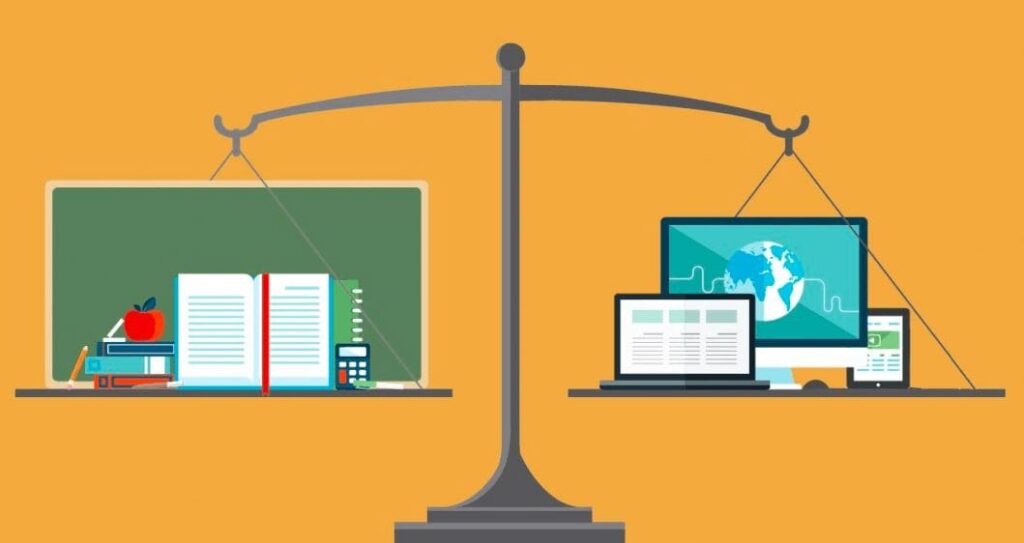Introduction
In recent years, technological advancements have led to the emergence of digital learning platforms (DLPs) that have been increasingly used as a substitute for traditional classroom teaching (TCT). While critics argue that the use of DLP is a less effective mode of learning than TCT since it is limited to theoretical subjects, the former has overwhelming advantages over the latter, which include better accessibility and personalized learning experience.
DLPs Are Inferior to TCT
Critics argue that DLPs are only suitable for acquiring theoretical knowledge, unlike TCT, which is functional in both practical and theoretical subjects. Although using online learning strategies to teach theoretical courses presents no significant challenges, achieving effective remote education for practical skills and disciplines is challenging (Stecuła and Wolniak 8). As such, those opposing the use of DLPs in propagating knowledge assume that the difficulty of acquiring practical skills using this approach limits the scope of online learning to theoretical subjects. Therefore, opponents contend that the use of DLPs is an inferior mode of learning compared to TCT because it does not cater to students interested in practical studies.

Accessibility
DLPs offer better accessibility to learning materials than TCT because they eliminate time and location constraints. Online education is feasible as students can easily access instructors and course materials without time limits and extra resources for travel (Mukhtar et al. 3). In this regard, students can find learning materials at any time from anywhere with minimum costs. However, in traditional classroom teaching, people have to be physically present at a specific time in order to access study materials. Consequently, TCT tends to be less accessible to students with limited time and resources. Thus, DLPs provide more accessibility to study materials by doing away with time and location limitations present in TCT.
Learning Experience
DLPs provide a more personalized learning experience than TCT because they encourage students to pursue their interests. Web-based education consists of personalized experiences that encourage learners to explore and incorporate prior knowledge and current interests. As a result, students can develop individualized learning objectives that are related to prior, present, and upcoming applications. On the contrary, TCT presents a less personalized system of learning, in which teachers set goals and students achieve these goals by providing the ‘right’ answers as determined by the teacher and, for the most part, completing what is required (Rojanasarot et al. 1001). As a consequence, learners may lose their intrinsic motivation, which prevents further intellectual discovery. The ability to offer a custom learning experience gives DLPs an advantage over TCT. Hence, the use of DLP is more advantageous to the learner because it is student-centered, whereas TCT is teacher-centered.
Conclusion
While opponents suggest that the use of DLP is less advantageous than TCT because it is limited to learning theories, the use of the former still has staggering benefits over the latter. One of the reasons why using DLP is more beneficial than TCT is because it presents unlimited accessibility to study materials, whereas the latter makes it compulsory for the student to be at a specific location at a particular time. Lastly, DLPs can cater to the student’s specific needs, whereas TCT can only be utilized to fulfill general learning objectives.
Works Cited
Mukhtar, Khadijah, et al. “Advantages, Limitations and Recommendations for Online Learning During COVID-19 Pandemic Era.” Pakistan Journal of Medical Sciences, vol. 36, no. COVID19-S4, 2020, pp. 1–5, doi:10.12669/pjms.36.covid19-s4.2785.
Rojanasarot, Sirikan, et al. “Personalized Learning in an Online Drugs and US Health Care System Controversies Course.” American Journal of Pharmaceutical Education, vol. 82, no. 8, 2018, pp. 1001–1007, doi:10.5688/ajpe6391.
Stecuła, Kinga, and Radosław Wolniak. “Advantages and Disadvantages of E-Learning Innovations during COVID-19 Pandemic in Higher Education in Poland.” Journal of Open Innovation: Technology, Market, and Complexity, vol. 8, no. 3, 2022, pp. 1–22, doi:10.3390/joitmc8030159.


